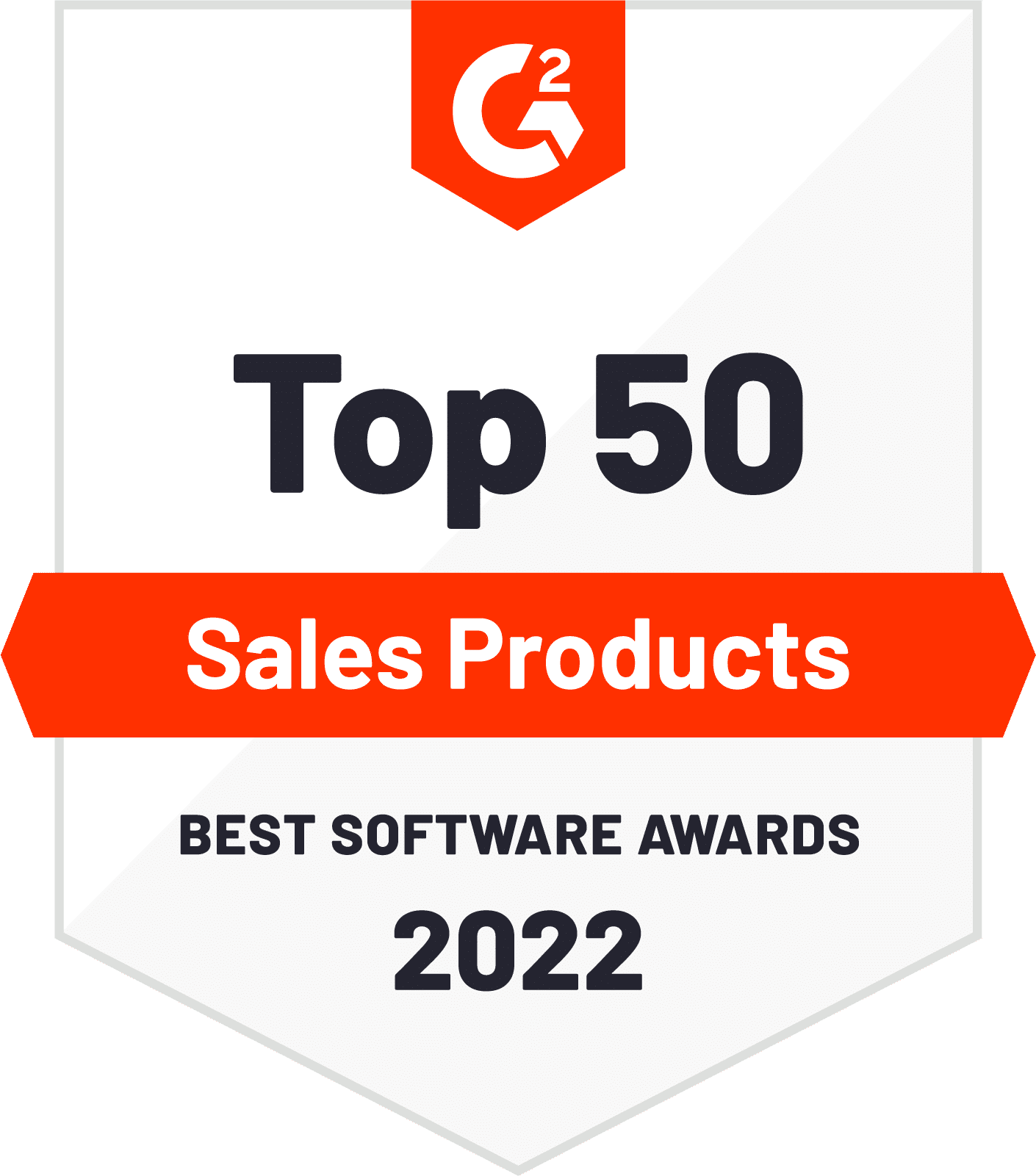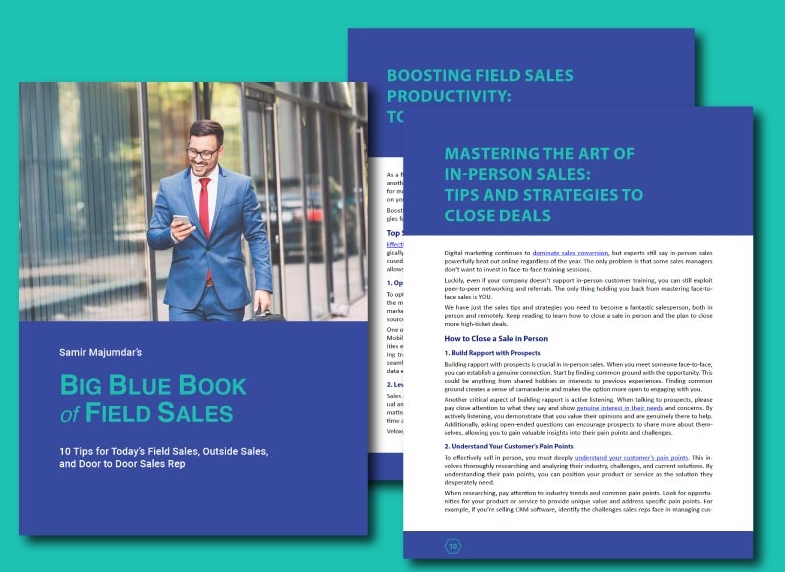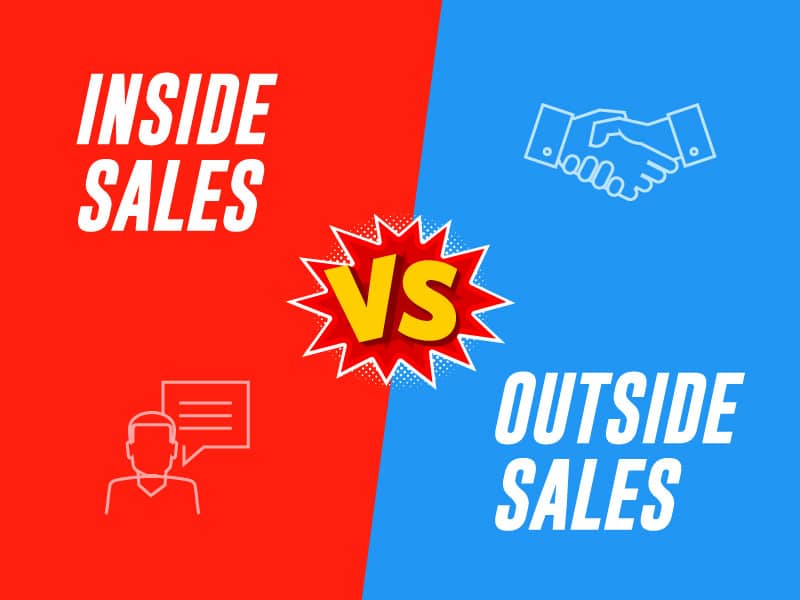
How to Get Into Medical Device Sales (Key Strategies for Success)
Dreaming of a rewarding and challenging career in medical device sales? You should be! The medical device industry is poised to reach nearly $800 billion in global annual sales by 2030. If you’re looking to cut yourself a piece of that pie, then you’re in for an exciting journey! In this guide, we’ll explore the ins and outs of becoming a medical
















After nearly four years of a global pandemic, where nearly all of the workforce worked remotely, things are starting to return to business as usual.
While it might be a slow return in some places, you are probably starting to consider again how you want your sales force to work for your business.
After years of remote sales work, you might be ready to evaluate what formula of sales force will best meet your needs as a business and as an employee.
Read on as we take a closer look comparing inside and outside sales.
What Is Inside Sales?
A company that employs inside sales reps will have them selling from “inside”. This means the salesperson is in the office working to sell to leads and customers. In some cases, they might even sell from their home office space.
An inside salesperson is likely to sell from their phone or email. They might work directly from a company website or other digital avenues.
It’s their job to connect with customers from afar versus face-to-face.
Inside sales are more commonly used in B2B sales scenarios. They are also commonly used in SasS and other tech-related fields.
Often the role of the inside salesperson will be to work in conjunction with the outside sales rep to cover the customer base.
Census data shows that inside sales make up about 45.5% of the sales force, and this number continues to grow post Covid.
Don’t forget to read our definitive guides to cold calling and cold emailing to help your inside sales efforts.
Roles and Responsibilities of Inside Sales Reps
Like any salesperson, the inside sales rep’s role is to address the needs of the customer or potential customer from a remote position and via sales calls. They are expected to:
Inside sales reps have a unique challenge since they don’t meet with the customers face-to-face. They will use phones, email, video, and virtual meetings to make those important connections with customers.
Inside salesperson responsibilities are likely to include:
Most importantly, the inside sales representative must demonstrate superior knowledge of the product or service so they can answer customer questions and inquiries.
Advantages & Disadvantages of Inside Sales
Inside sales, a pivotal part of the sales strategy for many businesses, offers significant benefits and faces distinct challenges in the digital landscape.
Advantages:
Disadvantages:
The balance of inside sales’ advantages and challenges underscores the importance of aligning your sales teams—whether they’re focused on inside or outside sales—with your overall sales strategy and the specific needs of your target market.
What is Outside Sales?
Like an inside salesperson is working remotely from the customer, the outside salesperson is out working in the field to meet with the customer face-to-face.
Their role is to travel to meet with clients and customers, connect with potential customers, and nurture those important customer relationships. This is why outside sales pros are also referred to as field sales reps.
Not only do the outside sales reps sell when they are meeting directly with the customer, but they also commonly work at selling at industry events, conferences, or speaking engagements.
Outside salespeople must be confident and demonstrate strong interpersonal skills. They need to be able to work their way into seeing customers who may be reluctant to make time for them.
Often field sales reps are faced with customer challenges and must be prepared to help figure them out on the spot, unlike an inside rep who might be able to step away and figure it out.
Outside sales reps should have good time management skills and be prepared to arrange their own schedules and work independently.
Don’t forget to read our definitive guide to field sales.
Roles and Responsibilities of Outside Sales Reps
Outside sales reps, often on the move, play a crucial role in direct customer engagement and sales conversion through in-person interactions. Their responsibilities include:
Key responsibilities of outside sales representatives also encompass:
Crucially, outside sales reps must possess an in-depth understanding of their offerings to effectively counter objections and highlight benefits, ensuring they can convert prospects into loyal customers.
Advantages & Disadvantages of Outside Sales
Outside sales blend the art of in-person meetings and the thrill of industry events into a unique sales approach, marked by both benefits and challenges.
Advantages:
Disadvantages:
As outside sales reps navigate the balance between personalized engagement and operational efficiency, the success of this role hinges on strategic planning, adaptability, and the ability to maintain morale during solitary journeys.
Key Differences between Inside and Outside Sales
Welcome to the vibrant showdown of sales titans, where inside and outside sales showcase their unique attributes. Inside sales, with its focus on warm leads and a process-oriented approach, thrives on pre-established demand and digital efficiency.
Conversely, outside sales champions the art of prospecting and building relationships through direct, in-person encounters, emphasizing lead quality and the strategic use of physical collateral.
As we delve into their divergent styles, let’s explore how each capitalizes on distinct strategies to achieve success, highlighting the importance of a clearly defined sales funnel for inside sales and the relationship-centric nature of outside sales.
Sales Environment & Interaction
Tools, Technologies, & Reach
Tempo, Costs, & Challenges
Personalization & Relationship Building
Comparing the Sales Models of Inside Sales and Outside Sales
As you consider the difference between inside and outside sales models, whether as a job or a sales team strategy, you want to look most closely at how the two different sales teams work.
First, consider your inside sales team. This model will:
Now, how do outside sales reps compare?
It’s important to consider your product when deciding between an inside sales model and outside sales model. Which model will work best with what you’re trying to sell?
Which Type of Sales Model Is Right for Your Business
When you evaluate your sales model, it’s important to consider not only your own business but your product or service and what will work best for your customers.
Customers are relying more and more on the digital world. How does that fit with what your sales force is trying to do?
Consider what format you can best showcase what you’re trying to sell. Most importantly, whether they’re in or out, hire salespeople who know the business of selling and can become experts at your products.
Inside vs Outside Sales: Salary and Career Growth
Regarding salary and career progression, both inside and outside sales provide diverse opportunities. Outside sales typically have higher base salaries and commission rates, owing to the nature of their work which often involves travel and face-to-face interactions.
On the other hand, inside sales representatives may receive a commission ranging from 2% to 4% of the sales they generate, which can equate to an average additional income of $2,000 to $27,000 on top of their base salary.
Inside Sales Salary Analysis
The average base salary for an inside sales rep in the United States is $51,948, while for inside sales account executives, it’s $42,833. The average on-target earnings (OTE) for inside sales account executives in the US is $96,299.
It’s worth noting that commissions and bonuses can significantly contribute to an inside sales rep’s total annual income, leading to a higher figure than just the base salary. Inside sales professionals in tech industries or companies selling high-value products/services can potentially earn significantly more due to the industry and product/service complexity, also influenced by an individual’s experience level.
Outside Sales Salary Analysis
In the United States, an outside salesperson can expect to earn an average base salary of about $97,527. Overall, the average salary for this role is just over $100,000. Outside sales reps have on average a 36% higher base salary compared to inside sales reps, and their on-target earnings are 9.2% higher.
The total annual income for outside sales representatives, including commissions and bonuses, is typically above $150,000. This higher earning potential is often attributed to the more complex nature of outside sales, often involving larger sales deals and face-to-face client interactions.
Choosing Between Inside and Outside Sales: Factors to Consider
The decision to pursue inside or outside sales as a career path frequently hinges on individual preferences and skill sets. Individuals with the following qualities may find inside sales to be a suitable career path:
Perseverance
Dedication
Research skills
Effective questioning and listening abilities
Aptitude for utilizing social media
Strong communication skills over the phone and the ability to articulate messages clearly are pivotal for prospective inside sales representatives.
On the other hand, outside sales might be a better fit for those who love traveling, relish face-to-face interactions, and possess the adaptability to manage new environments and situations. An effective outside salesperson should be adept at both verbal and nonverbal communication and possess skills such as critical thinking, problem-solving, and persuasiveness.
Should You Outsource Your Inside Sales Team?
Deciding whether to outsource your inside sales team is a thoughtful consideration that could shape the success of your business. Let’s explore the factors that come into play when pondering this pivotal choice.
1. Budgetary Considerations:
Outsourcing your inside sales team can present a compelling financial advantage. By entrusting this function to an external partner, you can potentially reduce overhead costs and administrative burdens, allowing you to allocate resources more strategically.
2. Expertise and Efficiency:
Outsourcing opens the door to a pool of specialized talent. By partnering with experienced professionals, you can tap into their knowledge and industry insights, revitalizing your sales strategies and bolstering your team’s performance.
3. Adaptability and Scalability:
The flexibility offered by outsourcing can be a valuable asset. You have the freedom to scale your sales force based on market demand, adjusting team size during peak periods and optimizing efficiency during quieter times.
4. Preserving Brand Identity:
Be mindful of maintaining your brand’s identity. When outsourcing, selecting a partner that aligns with your company values and vision is paramount to ensuring a seamless extension of your brand in customer interactions.
5. Balancing Control and Trust:
Outsourcing requires finding the right balance of control and trust. While it grants operational support, it’s essential to establish a transparent and communicative relationship with your chosen partner.
In this critical decision-making dance, consider your business’s unique rhythm. Evaluate your needs, weigh the benefits, and make a confident choice that will orchestrate success for your inside sales endeavors.
Should You Outsource Your Outside Sales Team?
Ah, the captivating prospect of outsourcing your outside sales team – a decision that could shape the destiny of your business. Let’s embark on this thrilling exploration and uncover the wonders that outsourcing may bestow upon your sales symphony.
1. Embracing Cost-Effectiveness:
Outsourcing your outside sales team can be a strategic move to waltz into cost savings. Imagine trimming the expenses of travel, training, and logistics. The budgetary benefits may create a harmonious symphony for your business.
2. Expanding Talent Horizons:
Envision a world where the stage is graced with top-tier talent. By outsourcing, you gain access to a wider pool of skilled professionals who can gracefully charm your potential customers and turn leads into loyal patrons.
3. Finesse in Flexibility:
The dance of outsourcing offers a graceful rhythm of adaptability. Scale your outside sales force in tune with fluctuating demand, and effortlessly adjust the team size to synchronize with market dynamics.
4. Cultivating Market Expertise:
A harmonious partnership with an outsourcing provider can be a gateway to market expertise. The amalgamation of their industry knowledge with your vision empowers your business to conquer a new sales territory.
5. Balancing Autonomy and Collaboration:
But beware the intricacies of the dance! As you tango with outsourcing, maintaining a balance of autonomy and collaboration becomes paramount. Nurturing a symbiotic relationship with your outsourcing partner ensures seamless harmony.
In this grand spectacle of business decisions, consider the melody that resonates with your goals. Weigh the pros and cons, and when the final note plays, make the decision that orchestrates a standing ovation for your outside sales performance.
Adapting to Industry Trends and Innovations
Within the fiercely competitive and constantly evolving sales industry, adaptability fosters the agility and responsiveness needed to meet shifting market conditions and customer preferences. An adaptable sales culture is characterized by a growth mindset, where employees are encouraged to embrace change and take calculated risks.
Sales teams committed to adaptability often drive creativity and innovation, which can result in new products and services. By being adaptable, sales organizations can build stronger, more responsive relationships with customers by effectively meeting their evolving needs.
Comparing Inside vs Outside Sales
As a sales manager, it’s important to compare inside vsoutside sales. Ask yourself which model best fits your business needs and more importantly the needs of your customer base.
At Veloxy, we want to help you simplify the sales cycle, whether it’s from inside or outside, and convert it into sales. Let us show you how your sales team can make more sales. Contact us today to get more information and get started.
And no matter which path you take, start a free trial of Veloxy for 30 days. We have solutions for inside sales, field sales, and sales managers.
Frequently Asked Questions
Is Inside Sales Harder than Outside Sales?
Both inside and outside sales come with their distinct challenges. Inside sales reps rely on digital communication to forge customer relationships, a task that demands creativity and strategic use of virtual channels. This role is pivotal in generating leads and engaging potential clients without the traditional in-person interaction, testing the reps’ digital savviness and communication skills.
Outside sales representatives, in contrast, excel in direct, personal connections. They face the challenge of building trust and rapport through face-to-face meetings, often navigating the complexities of travel and adapting to varied client environments on the go. This requires a blend of charisma, adaptability, and efficient time management.
Each sales style tests different skill sets, making the question of difficulty subjective. Success depends on leveraging each team’s unique strengths—whether they’re part of an inside sales team or an outside sales team—and aligning them with the company’s sales strategy and goals.
What is the Difference between Inside and Outside Sales in SaaS?
In the dynamic world of SaaS, the distinction between inside sales and outside sales is marked by their unique approaches to engaging potential clients. Inside sales teams leverage the power of digital communication, utilizing customer relationship management software (CRM) to manage the sales pipeline and connect with potential clients via online demos and webinars. This digital-first strategy allows inside sales reps to efficiently nurture leads.
Conversely, outside sales teams take a more traditional route, using face-to-face meetings at trade shows and conferences to build personal connections. Outside sales reps, equipped with the latest technology, play a crucial role in generating leads and expanding the sales strategy into new territories.
The synergy between inside sales reps and outside sales reps in SaaS underscores the importance of a balanced sales strategy, combining the efficiency of digital outreach with the impact of personal interaction to drive SaaS sales success.
What is the Ratio of Inside Sales to Outside Sales?
The right balance between inside sales reps and outside sales reps is crucial for your sales strategy, closely aligning with your business model and goals. Industries suited to digital engagement may lean more towards a robust inside sales team, leveraging remote channels to engage potential clients and manage the sales pipeline efficiently.
Conversely, sectors that benefit from direct interaction may prefer a stronger outside sales team presence, where outside sales professionals can effectively harness face-to-face meetings for generating leads and closing deals, especially in scenarios demanding a personal touch.
Determining the ideal ratio involves considering your target audience, product or service complexity, and budget. Tailoring your sales team structure to these factors ensures a harmonious sales process that drives business success.